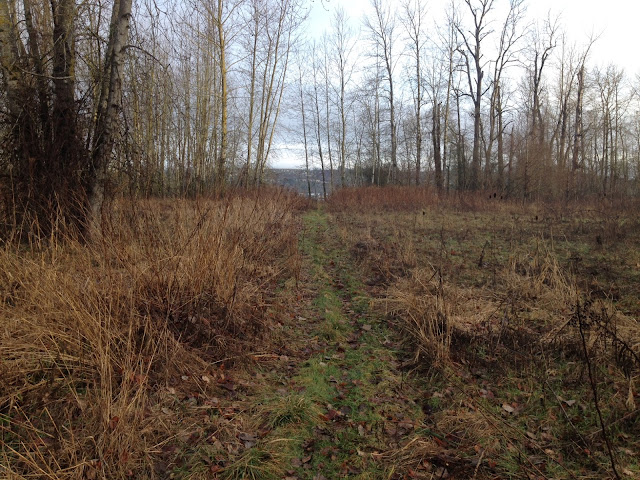I have been trying to get to Sundial Island all winter to do a bird survey, the weather finally cooperated today the 24th of January.
For some more information I posted last week about this area and some excerpts from Lewis and Clark's journals try this : Sandy River
I started off from Camas at 8:15, it is a quick 20 minute paddle across the Columbia. Huck agreed to go along as bow ballast. The keen observer will note I am paddling the canoe backwards. A trick when paddling alone is to do just that. It places you closer to the center of the boat, helpful in wind and current.
I hope to visit this island two times per season. I was disappointed in the number of birds seen, perhaps a slow day. I wonder if the winds that are common this far up the river keep bird numbers down. There are however lots of great habitat spots. I found only one flock of juncos. Juncos were a bird I was expecting to see in larger numbers. I also expected to find some Savannah Sparrows.
A look upriver from Camas.
And downriver as well. Lewis and Clark saw huge numbers of geese, swan and ducks here.
The island looked much like it did when it was connected to the mainland. Except the trails are gradually being overgrown, a few of the marginal trails I once hiked are all but gone.
A Bald Eagle was enjoying an overlook of the Sandy River.
The eagle decided I was not a threat.
American Robins were singing away.
There are still good numbers of woodpeckers out there, Hairy Woodpeckers were common.
After a 5.25 mile loop I was happy to find my canoe. It is not that close to the water, it is sitting up on a bank.
This is my map of the whole delta, it is available on the ECAS web site under Multnomah County, Sandy River.
My bird list:
Sundial Island, Multnomah, Oregon, US
Jan 24, 2016 8:40 AM - 1:40 PM
Protocol: Traveling
5.25 mile(s)
Comments: overcast, one very slight and brief rain shower for maybe 10 min, some sun, no wind, high 40's temp.
28 species (+1 other taxa)
Bufflehead 3
Common Goldeneye 1
Common Merganser 1
Double-crested Cormorant 3
Great Blue Heron 3
Bald Eagle 3
Red-tailed Hawk 3
California Gull 1
Western x Glaucous-winged Gull (hybrid) 1
Anna's Hummingbird 1
Belted Kingfisher 3
Downy Woodpecker 4
Hairy Woodpecker 8
Northern Flicker 5
Pileated Woodpecker 1
American Crow 3
Black-capped Chickadee 35
Bushtit 50
Brown Creeper 3
Pacific Wren 3
Bewick's Wren 2
Golden-crowned Kinglet 20
Ruby-crowned Kinglet 6
American Robin 6
European Starling 7
Dark-eyed Junco 12
Golden-crowned Sparrow 5
Song Sparrow 7
Spotted Towhee 4
Thanks for visiting!








































